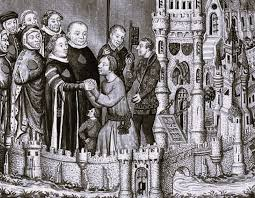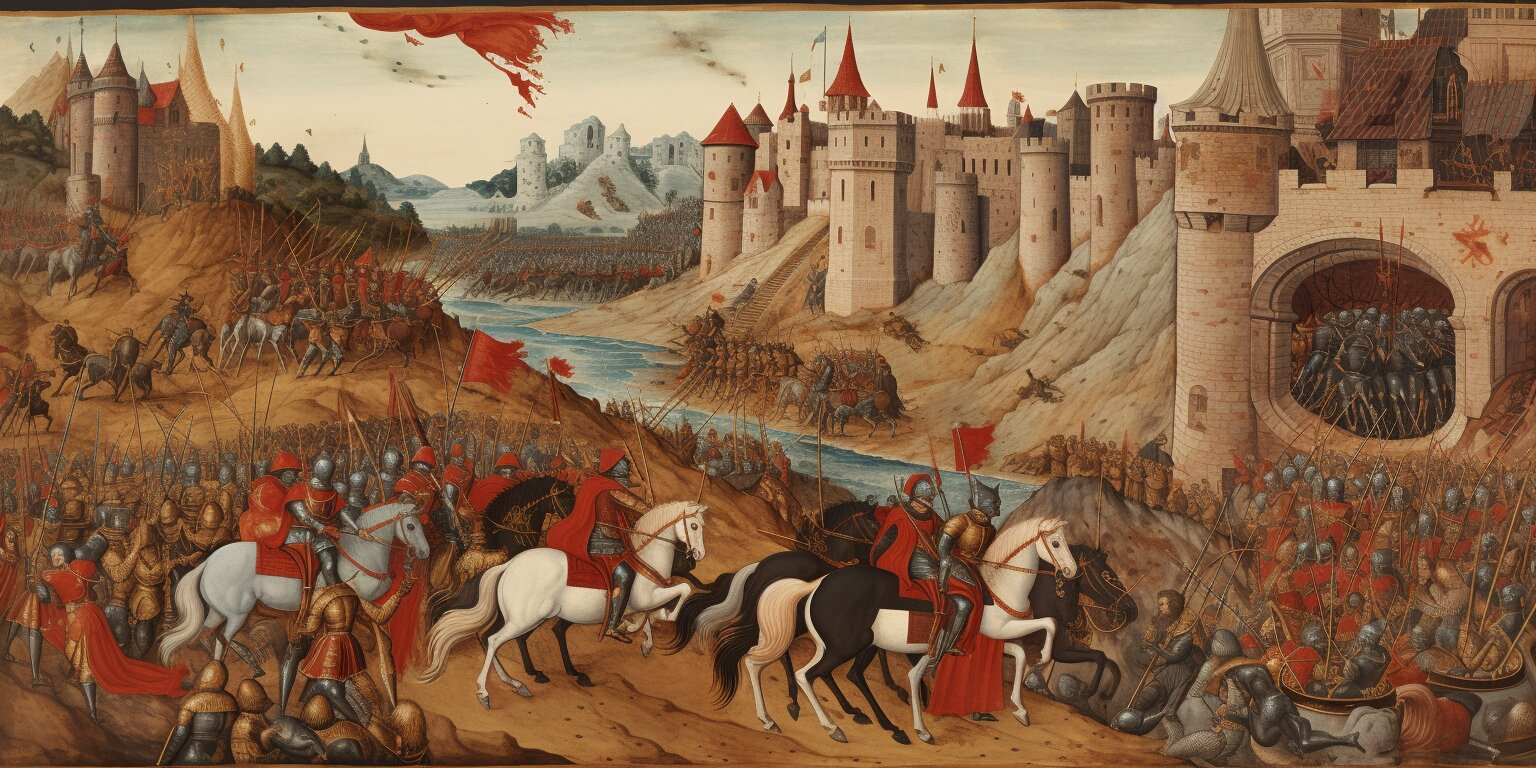Q. Discuss the debate on the study of early medieval polity.
The study of early
medieval polity has long been a subject of debate among historians, political
theorists, and scholars of medieval studies. The period in question, roughly
spanning from the 5th to the 12th centuries, is often viewed as a
transformative era that witnessed significant shifts in political, social,
economic, and cultural structures across Europe, the Middle East, and parts of
Asia. The early medieval period, sometimes called the "Dark Ages,"
represents a time when the once-glorious Roman Empire crumbled and gave way to
smaller, often fragmented kingdoms, tribal confederacies, and regional powers.
The debate surrounding the study of early medieval polity primarily revolves
around the nature of governance, the organization of power, and the relationship
between political authority and society during this period. Scholars disagree
on various aspects of early medieval political structures, especially regarding
the persistence of Roman imperial models, the role of feudalism, the
significance of religion, and the emergence of proto-modern state formations.
1. The Decline of
Roman Imperial Models and the Transition to Feudalism:
One of the most
significant debates in the study of early medieval polity concerns the nature
of the political transition that occurred after the fall of the Western Roman
Empire in 476 CE. The collapse of the Roman state left behind a vacuum of
centralized authority, which was quickly filled by local rulers, military
leaders, and warlords. This period is marked by the fragmentation of political
power, the disappearance of Roman administrative structures, and the rise of
smaller, more localized forms of governance.
Some scholars argue that
the early medieval period marked the complete demise of Roman-style government.
They point to the absence of Roman legal systems, taxation structures, and
centralized military organization as evidence of a dramatic break from the
past. This view, often associated with the "decline and fall" model
of historical analysis, suggests that the early medieval polity was
characterized by a shift from a sophisticated and bureaucratic Roman state to a
more rudimentary and decentralized system of governance. In this
interpretation, early medieval Europe was primarily defined by fragmented
kingdoms and principalities, each governed by tribal or military elites with
little to no central authority.
On the other hand, some
scholars contend that the legacy of Roman political structures persisted well
into the early medieval period. They argue that, even though the Roman Empire
had collapsed, its institutional, legal, and administrative frameworks continued
to influence the development of early medieval polity. For example, many early
medieval kingdoms in Europe, including the Frankish and Visigothic kingdoms,
retained Roman-inspired legal systems, military practices, and taxation
methods. In this view, the transition to the early medieval period was not a
radical rupture but a gradual evolution from Roman models to more localized,
yet still Roman-influenced, forms of governance.
The debate here is
central to understanding the nature of early medieval polity: was this period
truly a "dark age" of political disintegration, or was it a time of
gradual transformation, with lingering remnants of Roman governance continuing to
shape new political formations?
2. The Rise of
Feudalism and the Structure of Power:
The concept of feudalism
is another key area of debate in the study of early medieval polity. Feudalism,
as it is traditionally understood, refers to a system of decentralized
political and economic organization based on land tenure and personal relationships
of loyalty and service. According to this model, kings or higher-ranking lords
granted land (fiefs) to vassals in exchange for military service, while
peasants worked the land in exchange for protection. Feudalism became the
dominant political system in much of medieval Europe, particularly from the 9th
century onward.
However, the application
of the term "feudalism" to the early medieval period is highly
contested. Some scholars argue that feudalism, in its classic form, did not
exist during the early medieval period but rather developed later, especially
after the 9th and 10th centuries. These historians claim that, while systems of
patronage, loyalty, and land tenure were present, the rigid, hierarchical
structures associated with feudalism—such as the clear division of land into
fiefs and the strict relationships between lords and vassals—did not fully
emerge until the high medieval period. According to this perspective, early
medieval polity was more fluid, with power being exercised by local rulers in a
more informal manner.
Other scholars, however,
contend that feudal structures can be observed in the early medieval period,
even if they did not take the fully developed form that would later define the
high Middle Ages. For instance, the practice of land grants and the importance
of military service in exchange for land and protection were common during this
period, particularly in the wake of the collapse of centralized Roman
authority. The Frankish kings, in particular, made extensive use of local
nobles, granting them land and power in exchange for loyalty and military
service. These relationships of vassalage, while not as formalized as later
feudal systems, laid the foundation for the rise of feudalism in the 9th and
10th centuries.
Thus, the debate over
feudalism in early medieval polity centers on whether the political system of
the time should be categorized as "feudal" or whether this label
obscures the more complex and varied systems of governance that existed during the
period. Scholars continue to disagree on the extent to which feudalism shaped
early medieval political organization and whether it was truly a defining
feature of the period.
3. The Role of
Religion in Early Medieval Polity:
The role of religion in
shaping early medieval polity is another crucial point of debate. Christianity
played a central role in the governance of early medieval Europe, especially
after the conversion of the Roman Emperor Constantine to Christianity in the
4th century and the subsequent Christianization of the Roman Empire. By the
early medieval period, the church had become a dominant force in political
life, and the relationship between the church and the state became a defining
feature of medieval polity.
The relationship between
the church and secular rulers in early medieval Europe was complex and varied.
On one hand, many early medieval rulers saw themselves as protectors of the
church, and they sought to align themselves with the religious authority of the
pope or bishops. The church, in turn, wielded considerable influence over
rulers, providing legitimacy and moral authority. For example, the coronation
of Charlemagne as Holy Roman Emperor by Pope Leo III in 800 CE symbolized the
fusion of political and religious authority, with the emperor's power being
sanctioned by the church.
On the other hand, there
was often tension between the church and secular rulers, as both sought to
assert their authority. The early medieval period saw numerous disputes over
the control of church property, the appointment of bishops, and the relationship
between secular and ecclesiastical law. These conflicts were often resolved
through complex negotiations or, in some cases, by direct confrontation, such
as the Investiture Controversy in the 11th century, which pitted the pope
against the Holy Roman Emperor over the right to appoint bishops.
Scholars debate the
extent to which the church dominated early medieval political life. Some argue
that the church was the most powerful institution, shaping not only religious
life but also political decision-making. Others contend that secular rulers often
retained considerable power and autonomy, using the church to bolster their
legitimacy but not allowing it to control their policies. In any case, the
intertwining of religion and politics in early medieval Europe was undeniably
profound, and understanding this relationship is crucial to the study of early
medieval polity.
4. The Nature of
Kingship and Political Authority:
Another major point of
debate in the study of early medieval polity is the nature of kingship and
political authority. The kings of early medieval Europe, especially those of
the Merovingian, Carolingian, and Anglo-Saxon dynasties, wielded power in ways that
were both similar to and different from their Roman predecessors. Early
medieval kings were often seen as divinely chosen, and their authority was
often tied to religious beliefs and practices. For example, in the Frankish
kingdom, the concept of the "sacred kingship" held that the king was
God's representative on Earth, and his rule was justified by divine will.
However, unlike the centralized authority of Roman emperors, early medieval kings were often constrained by the power of local elites, nobles, and church officials. Kings often relied on the support of local lords and military leaders to maintain their authority, and their power was frequently challenged by rebellious nobles or competing factions. This decentralized nature of political authority is often seen as a defining feature of early medieval governance, and it stands in contrast to the highly centralized authority of the Roman Empire.
The debate surrounding
kingship in early medieval polity concerns whether early medieval kings were
effective rulers who held significant power or whether their authority was
largely symbolic, with real power lying in the hands of local elites. Some scholars
argue that early medieval kings were strong leaders who maintained control over
their realms through strategic alliances, military power, and religious
legitimacy. Others contend that kings were often weak and dependent on the
support of powerful nobles, and that their authority was frequently undermined
by internal divisions and external threats.
5. The Emergence of
Proto-Modern States:
A final area of debate in
the study of early medieval polity concerns the extent to which early medieval
political structures laid the foundations for modern state formation. The
emergence of centralized states in the late medieval and early modern periods—such
as the Kingdom of France, the Kingdom of England, and the Holy Roman Empire—was
often seen as a gradual process that began in the early medieval period. Some
scholars argue that early medieval kingdoms and polities, despite their
decentralization and fragmentation, represented important steps toward the
emergence of the modern state. These states, they argue, were not entirely
disorganized but contained elements that would later evolve into more
centralized and bureaucratic states.
Others, however, maintain
that the early medieval period was characterized by a lack of state formation,
with political power being exercised primarily through personal relationships
and localized authority. According to this view, the rise of modern states in
Europe was a much later development, and the early medieval period should not
be seen as a precursor to modern political structures but rather as a time of
political experimentation and transformation.
Conclusion:
In conclusion, the debate
on the study of early medieval polity revolves around multiple interrelated
issues, including the legacy of Roman political structures, the nature of
feudalism, the role of religion, the authority of kingship, and the emergence of
modern state formations. Scholars continue to grapple with the question of
whether early medieval polity represents a period of political fragmentation
and decline or one of gradual transformation and adaptation. The complexity and
diversity of political structures during this period make it clear that the
study of early medieval polity is far from settled. Rather, it remains an
evolving field of inquiry that challenges our understanding of the past and
provides valuable insights into the development of political systems throughout
history.












0 comments:
Note: Only a member of this blog may post a comment.